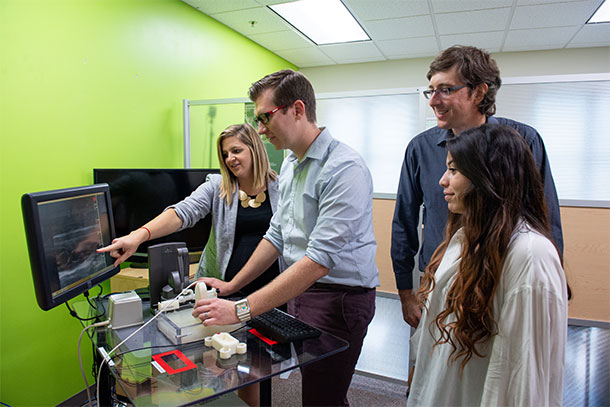Robotic training could help to decrease catheter placement complications

Each year, more than five million central venous catheters (CVCs) are placed in a large vein in the neck, chest or groin to provide patients with fluids, blood or medications. The thin, flexible tubes empty their contents into or close to the heart, providing almost immediate treatment. Of these five million patients, close to 1.7 million experience some sort of complication related to the catheter insertion — one in every three patients.
A Penn State-led, multi-disciplinary and multi-institutional research team aims to develop an innovative robotic training system to reduce the number of complications associated with CVC placement.
Through a five-year, $2,233,411 grant recently awarded by the National Institute of Health’s National Heart, Lung and Blood Institute, principal investigators Jason Moore, PhD, MS, associate professor of mechanical engineering, and Scarlett Miller, PhD, associate professor of engineering design and industrial engineering, will lead a team of engineers, medical professionals and graduate students to build upon their previous dynamic haptic CVC work supported by the NIH.
Co-investigators include the project’s lead medical doctor, David Han, MD, MSc, professor of surgery and radiology at Penn State College of Medicine; Elizabeth “Lisa” Sinz, MD, MEd, associate dean for clinical simulation at Penn State College of Medicine and professor of anesthesiology, critical care medicine and neurosurgery; and Philip Ng, medical director of the Procedure Center and Vascular Access Services at Cedars-Sinai in Los Angeles.
The new project will use the team’s innovative concept of dynamic haptic robotic training (DHRT), where a programmable robot is used to apply force to a surgical resident’s hand to replicate the feeling of inserting a needle into a patient’s body, to develop and implement an entire CVC procedural training system.
Learn more about the project in this Penn State News story.
If you're having trouble accessing this content, or would like it in another format, please email Penn State Health Marketing & Communications.
